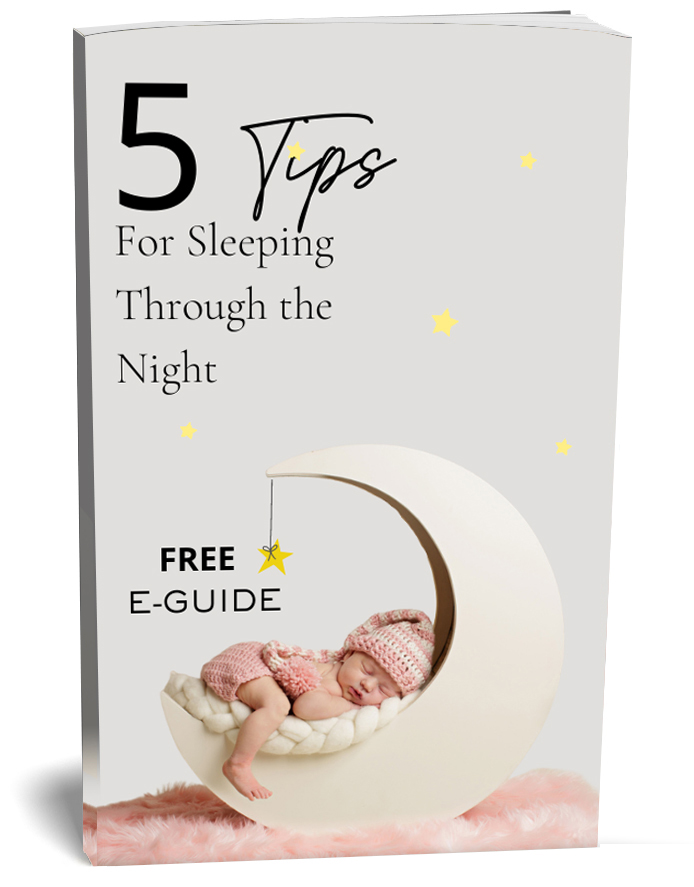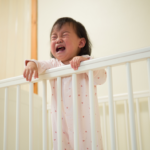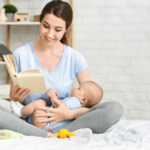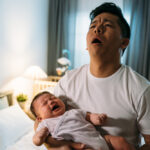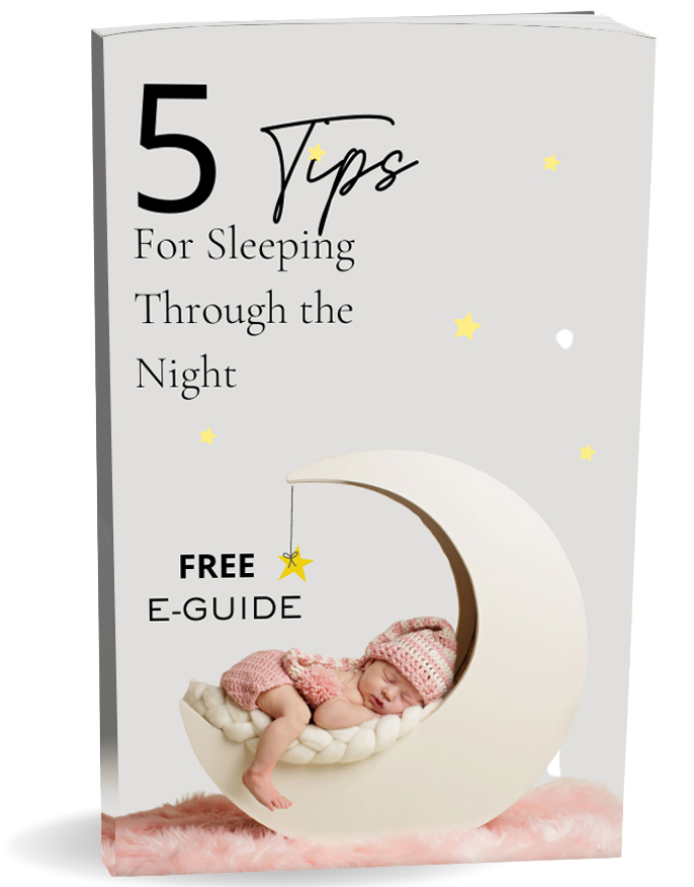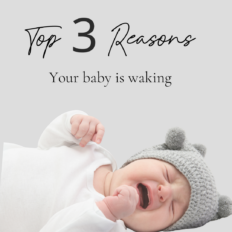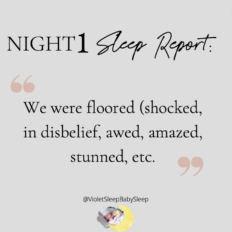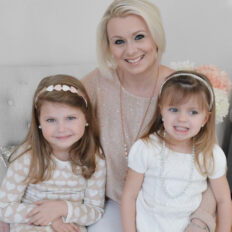
When it comes to baby sleep, one of the most common questions I get asked as a consultant is about baby sleep positions. Whether your little one prefers sleeping on their back, side, or even with their mouth wide open, there’s a lot to understand about these positions. Knowing the meaning behind your baby’s sleep position can help you understand if they’re comfortable, safe, and getting the rest they need.
So, let’s break down what some of the most common baby sleep positions mean for your little one’s comfort and safety.
Back Sleepers – The Recommended Position
The most common and safest of all baby sleep positions is lying on their back. This position is recommended by just about every pediatrician out there because it reduces the risk of Sudden Infant Death Syndrome (also known as SIDS). When babies sleep on their backs, they are less likely to re-breathe carbon dioxide that can get trapped in soft bedding or blankets.
Back sleeping also gives babies the freedom to move their arms and legs easily, which is why you might notice them stretching out or even lifting their legs up as they snooze – it’s just them making sure they’re comfy. It’s also completely normal for babies to wriggle and sometimes even roll a bit, as long as they stay mostly on their back.
So if in doubt, try to make sure your baby is most often sleeping safely on their back.
Side Sleepers – Comfort, But Not Always Safe
Some babies seem to prefer side sleeping, especially if they’ve rolled into that position on their own. While it may look cozy, sleeping on the side isn’t recommended until your baby is older and able to roll independently both ways. Side sleeping can make them more prone to rolling onto their stomachs, which can increase the risk of SIDS.
If your baby tends to roll onto their side in their sleep, try to gently turn them back onto their back whenever you can. As they grow stronger and develop their own mobility skills, side sleeping becomes less of a concern, but for newborns, back sleeping is definitely the safest.
Stomach Sleepers – Can Babies Sleep on Their Stomach?
This is a super common question I get when talking about baby sleep positions: can babies sleep on their stomach? This is a big topic in the world of baby sleep. The resounding answer among pediatricians and sleep consultants is NO. Especially for younger babies, typically those under 12 months old. Sleeping on the stomach is not recommended because it significantly raises the risk of SIDS.
When a baby sleeps on their stomach, it can lead to restricted airflow, overheating, or even re-breathing exhaled air, all of which are red flags for a baby’s safety. However, if your baby is older and has started rolling on their own both ways – front to back and back to front – it should be okay if they happen to roll onto their tummy while asleep. In this case, it’s generally safe to leave them as they are, since they have enough strength and mobility to adjust their own positions. But remember, if they are below 12 months, it is safest to reposition them to sleep on their backs.
Sleeping with Legs in the Air – The Froggy Pose
Another position – one that always makes me laugh through the baby monitor – is when babies sleep with their legs in the air, resembling a froggy pose. This position often happens when babies are in a deep, comfortable sleep. And it’s usually a sign that they feel secure. If you’re worried about your baby sleeping this way, know that it is perfectly safe because they are on their backs! The froggy position is also more common among babies who are swaddled, it’s their go-to comfort pose.
Is Your Baby Sleeping with Their Mouth Open?
Another thing you may have noticed is your baby sleeping with their mouth open. So, is your baby sleeping with their mouth open a concern? Sometimes, yes – but often, no. Babies may sleep with their mouth open due to blocked nasal passages, which could happen if they’re congested or have allergies. This isn’t uncommon, especially during the winter months when colds are more frequent.
However, if your baby consistently sleeps with their mouth open, it’s a good idea to discuss it with your pediatrician. Chronic mouth breathing could indicate other issues like nasal obstruction, and your doctor will be able to guide you on the next steps to help your little one breathe easily.
The Starfish Position – Arms and Legs Spread Wide
Have you ever peered into the crib and seen your baby in a starfish position, with their arms and legs sprawled out? Among being one of the cutest, it is also a great sign that your baby is safe and sleeping soundly. It typically means that they are comfortable, relaxed, and feel safe in their environment.
A baby who feels secure in their sleep environment will often stretch out like this. It can also mean they are not too hot or cold – so it’s a good sign that the temperature and sleep setup are working well.
Curled Up on Their Side – A Sign of Comfort
As your baby grows and gains more control over their movements, you might find them sleeping curled up on their side. This position is common once they are old enough to roll and can often indicate that they’re simply finding their comfort. It’s very similar to how many adults prefer to sleep. While it’s sweet to watch, remember, until they can roll consistently both ways, back sleeping is still the recommended choice.
Can Your Baby Sleep Too Much?
This is another important topic to consider when it comes to understanding your baby’s sleep. Can your baby sleep too much? Typically, newborns need around 14-17 hours of sleep in a 24-hour period, and that number may gradually decrease as they grow older.
However, if your baby is sleeping much more than usual, and seems unusually lethargic or hard to wake up, it may be worth a chat with your pediatrician. Prolonged sleep that is accompanied by other symptoms – like low energy, bad feeding sessions, or irritability – can be a sign of an underlying illness.
Most of the time, though, a sleepy baby is just getting the rest they need for all that growing they’re doing! Babies go through rapid growth spurts, and during these times, it’s normal for them to sleep more than usual. Just make sure they are feeding well and showing their usual signs of alertness when awake.
Tips for Encouraging Safe Baby Sleep Positions
- Always place your baby on their back to sleep for the first year. This is the safest position, especially for infants.
- Use a firm mattress and keep the crib clutter-free. Soft bedding and stuffed animals can interfere with safe sleeping positions. Cribs should be zero-toy zones during the night time.
- Avoid swaddling once your baby starts to roll. Once your baby can roll around, they could roll into an unsafe baby sleep position and not be able to roll back if they are swaddled up.
Want more baby sleep education?
I created this blog to give exhausted parents like you real, trustworthy guidance—because figuring out baby sleep shouldn’t feel so overwhelming. Whether you’re pregnant, navigating the newborn fog, or chasing a toddler around the house, there’s something here for you.
You’ll find posts on everything from baby sleep positions and regressions to the top reasons little ones wake overnight (and what to do about it). Explore all my free blogs here—they’re packed with tips you can actually use.
And if you’re ready for personalized help, I’m just a message away. When we work together, you won’t be left guessing—I’ll create a custom plan for your baby and guide you through every single nap and bedtime until sleep finally clicks. You’ve got this—and I’ve got you. 💛
💤 Here’s what working with me looks like 💤
More blogs on understanding baby sleep positions, handling sleep regressions, the most common reasons for babies to wake up at night, and more. You can check out all my blogs here.

